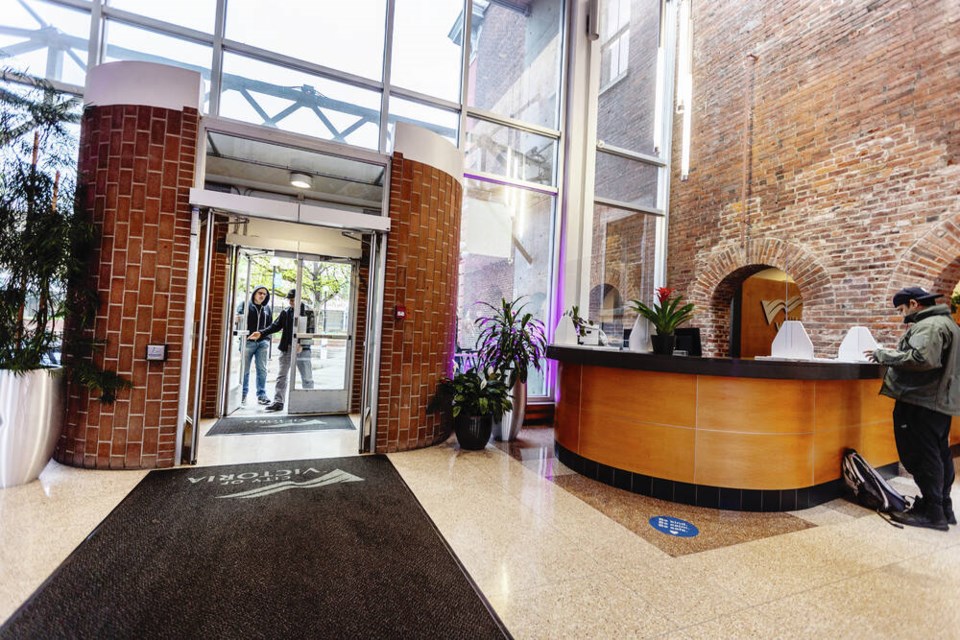In a move designed to cut greenhouse gas emissions, Victoria council Thursday endorsed a staff plan to establish an incentive program to urge rental building owners to undertake mechanical equipment electrification, energy efficiency improvements, and seismic upgrades.
Council voted unanimously to direct staff to establish a pilot program that would involve five buildings — three projects focusing on equipment electrification and two focusing on seismic upgrades — to determine what would convince building owners to invest to make their aging buildings more efficient.
The project suggests providing a municipal property tax exemption up to 100 per cent of the total eligible cost for as long as 10 years.
To be eligible, buildings must be market rentals built between 1960 and 1979 with three to four storeys, an elevator, and rely on natural gas for heat and hot water.
The buildings must also be up to date on property taxes, must not displace tenants with the work, undergo a seismic assessment and a full electrical capacity assessment.
That kind of building was chosen because it is the most likely to yield emission reduction results as it has the highest baseline energy consumption and makes up the largest component of older rental apartment buildings and units — there are 198 buildings with 8,400 total units.
An energy analysis done as part of a Market Rental Revitalization Study found energy and emissions reductions of between 22 and 50 per cent could be achieved by upgrading existing natural gas equipment and performing substantial building envelope improvements.
Seismic projects may include or be expanded to include measures that reduce energy use.
Coun. Jeremy Caradonna said this kind of project could be the start of taking a massive bite out of the city’s emissions.
“I believe 52 per cent of our emissions come from the built environment, so this is the lion’s share of our emissions. We’ve taken action on new buildings, but existing buildings is really going to be the challenge,” he said. “So I’m really hopeful that this pilot will be successful and we’ll be able to turn it into some kind of regularized program.”
The pilot project will test the revitalization tax exemption tool’s effectiveness in getting building owners to act and decarbonize by converting natural gas mechanical equipment to electric while testing technology and methods for electrification and seismic upgrades.
Council also directed staff to consider expanding the kinds of building that can take part in the project as well as other means of financing the pilot.
Having now been passed by council’s committee of the whole, the project will be before council June 22 for ratification.
A staff estimate of the potential cost of the program suggests the average building, which pays an average of $46,000 in municipal taxes, could claim an exemption from tax of as much as $460,000 based on the 10-year maximum for revitalization tax exemptions.
>>> To comment on this article, write a letter to the editor: [email protected]



